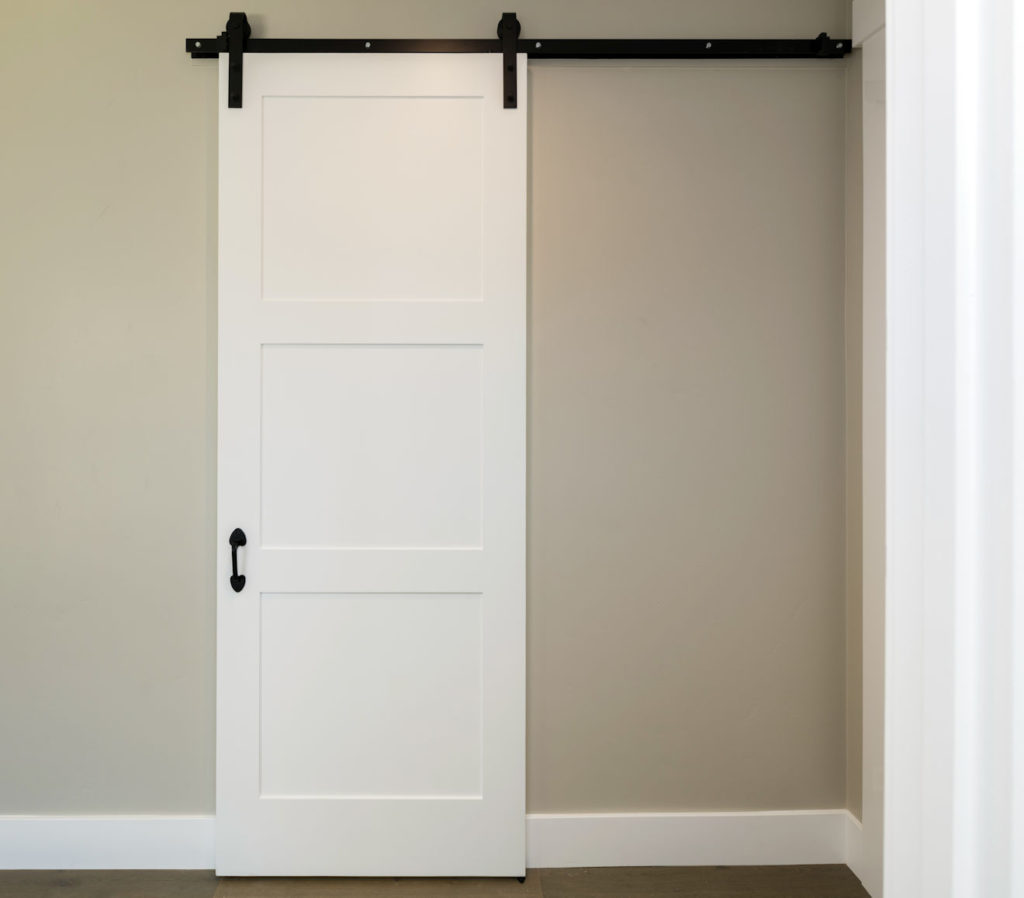 Most doors within a means of egress are required to be side-hinged or pivoted swinging doors, but there are specific exceptions in the model codes which define where sliding doors are allowed. Many of the accessibility requirements that apply to swinging doors also apply to sliding doors, although some of the requirements are slightly different for sliding doors vs. swinging doors. For example, the maneuvering clearance required for a sliding door is different from that required for a swinging door.
Most doors within a means of egress are required to be side-hinged or pivoted swinging doors, but there are specific exceptions in the model codes which define where sliding doors are allowed. Many of the accessibility requirements that apply to swinging doors also apply to sliding doors, although some of the requirements are slightly different for sliding doors vs. swinging doors. For example, the maneuvering clearance required for a sliding door is different from that required for a swinging door.
The ADA standards and ICC A117.1 both cover the accessibility requirements for manually-operated sliding doors that are part of an accessible route. These mandates include a maximum opening force, minimum clear opening width, required maneuvering clearance, and requirements pertaining to operable hardware.
This Decoded article includes specific information about each of these requirements as they apply to sliding doors, particularly the details regarding the operable hardware. After reading the linked article, proceed to the review questions below.
~~~
Review Questions
1. Which of the following accessibility requirements for swinging doors does NOT apply to sliding doors?
- Minimum clear opening width of 32 inches
- Maximum opening force of 5 pounds
- 10-inch-high flush bottom rail
- Operable hardware that does not require tight grasping, pinching, or twisting of the wrist
2. Which of the following statements is true with regard to maneuvering clearances for sliding doors?
- The maneuvering-clearance requirements for sliding doors are the same as the requirements for swinging doors.
- No maneuvering clearance is required for sliding doors.
- Maneuvering-clearance requirements specific to sliding and folding doors are spelled out in the accessibility standards.
- A maximum maneuvering clearance of 36 inches wide x 42 inches deep is required for all approaches to sliding doors.
3. Surface-mounted door pulls on sliding doors should have how much clearance?
- 1 1/2 inches behind the door pull
- 1 1/2 inches between the pull and the frame when the door is fully-open
- 1 1/2 inches between the pull and the frame when the door is fully-closed
- All of the above
Answers: 1 – C, 2 – C, 3 – D
